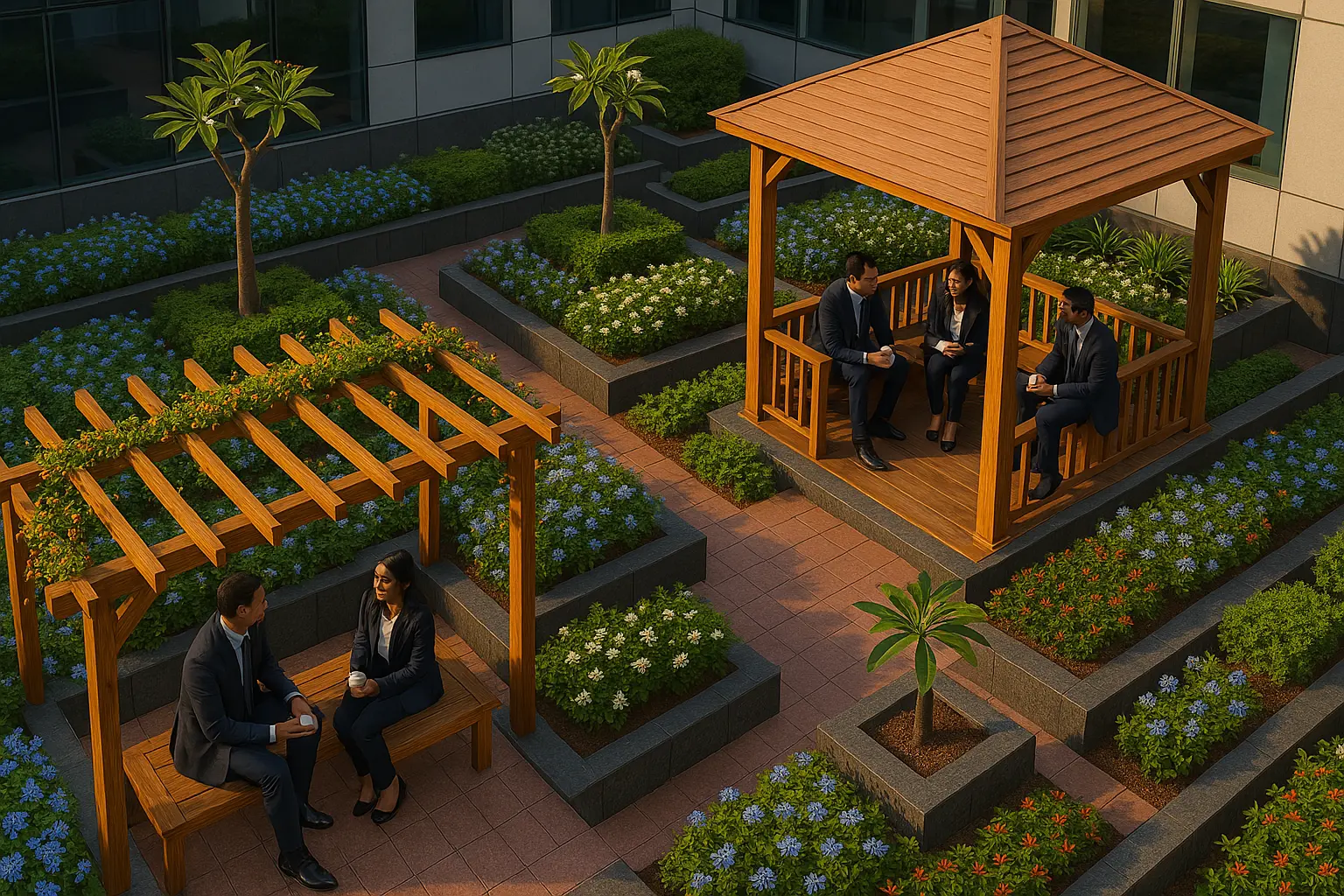Rooftop Blooms: Transforming Urban Spaces with Flowering Sanctuaries
Creating Living Canvases Above the City
In the concrete jungles of today's urban landscapes, rooftop gardens have become essential breathing spaces that reconnect us with nature. At Lansol Landscape Solutions, we've led the way in sustainable design practices that turn desolate rooftops into lush flowering sanctuaries, merging aesthetic beauty with ecological functionality. Our expert landscape consultants bring years of experience in designing immersive and impressive spaces that flourish even in harsh environments such as Pune's climate.
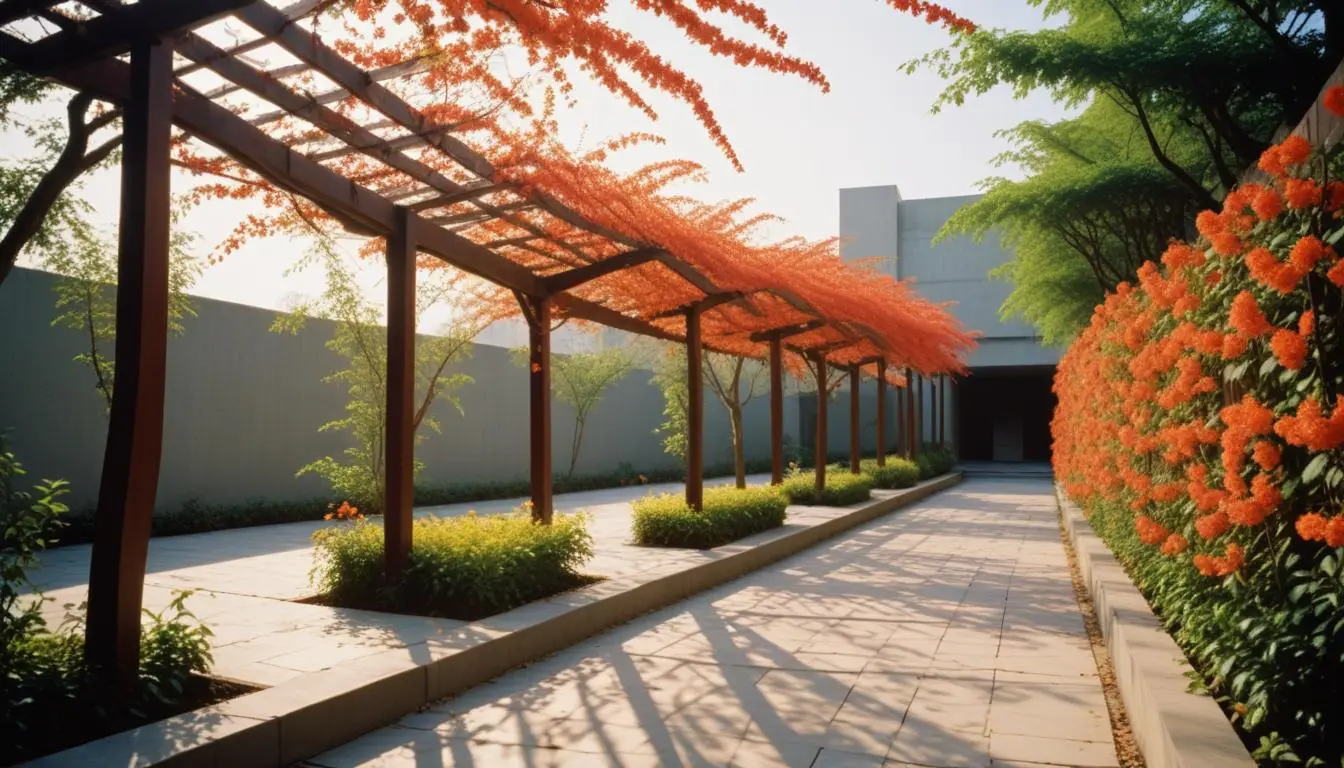
Why Professional Landscape Consultation Makes All the Difference
Designing a successful rooftop garden is not just a matter of putting plants in pots. The diversity of these spaces requires professional expertise that deals with several issues at once:
- Structural factors are of primary importance, as rooftops have weight limits that need to be precisely determined. Professional landscape consultants review load-bearing capacities to establish ideal placement of heavy items such as trees or big planters.
- Microclimatic conditions on roofs vary quite differently from those at ground level. The temperature varies more erratically, the winds are greater, and sunlight and rain exposure are unobstructed. Plant selection and placement depend on these conditions.
- Irrigation and drainage networks need to be engineered exactly for efficiency and longevity, particularly in Pune's demanding climate of monsoon rains
- alternating with blistering dryness.
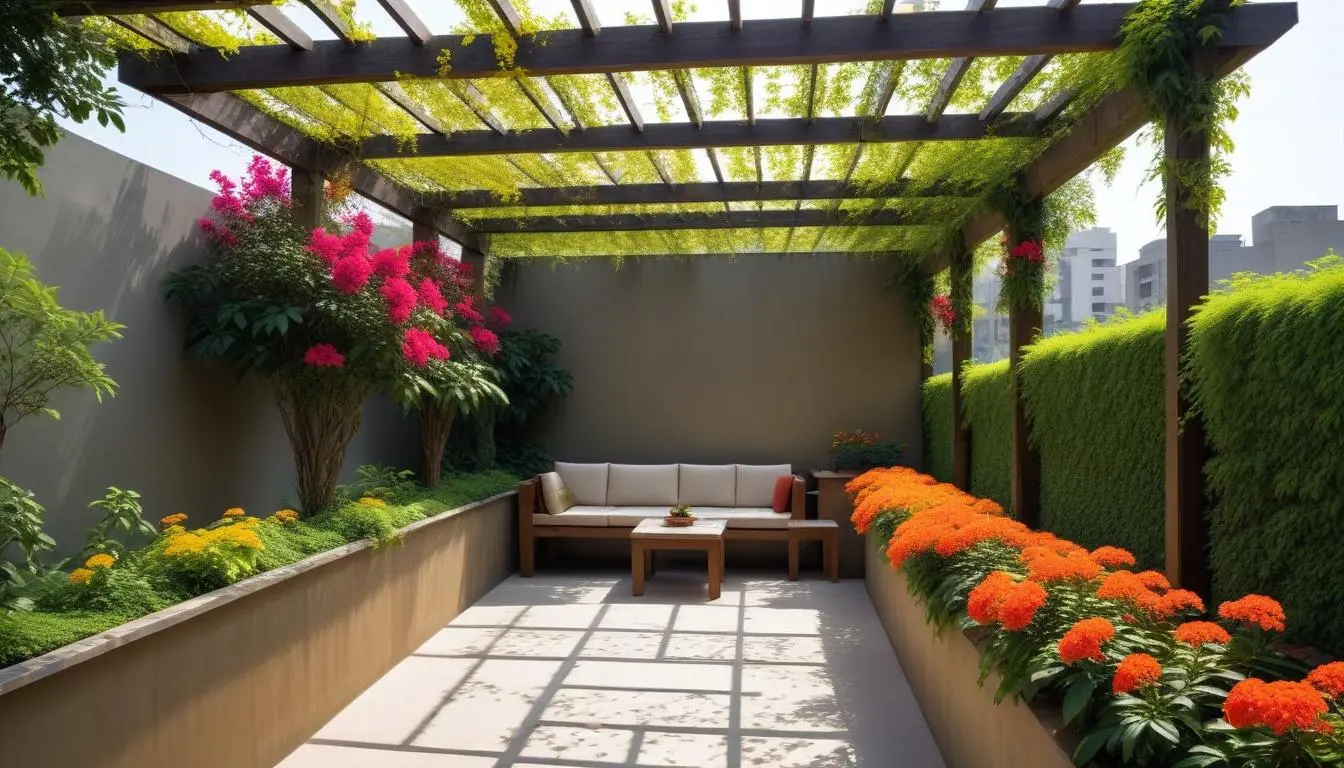
Flowering Solutions for Pune's Climate Challenges
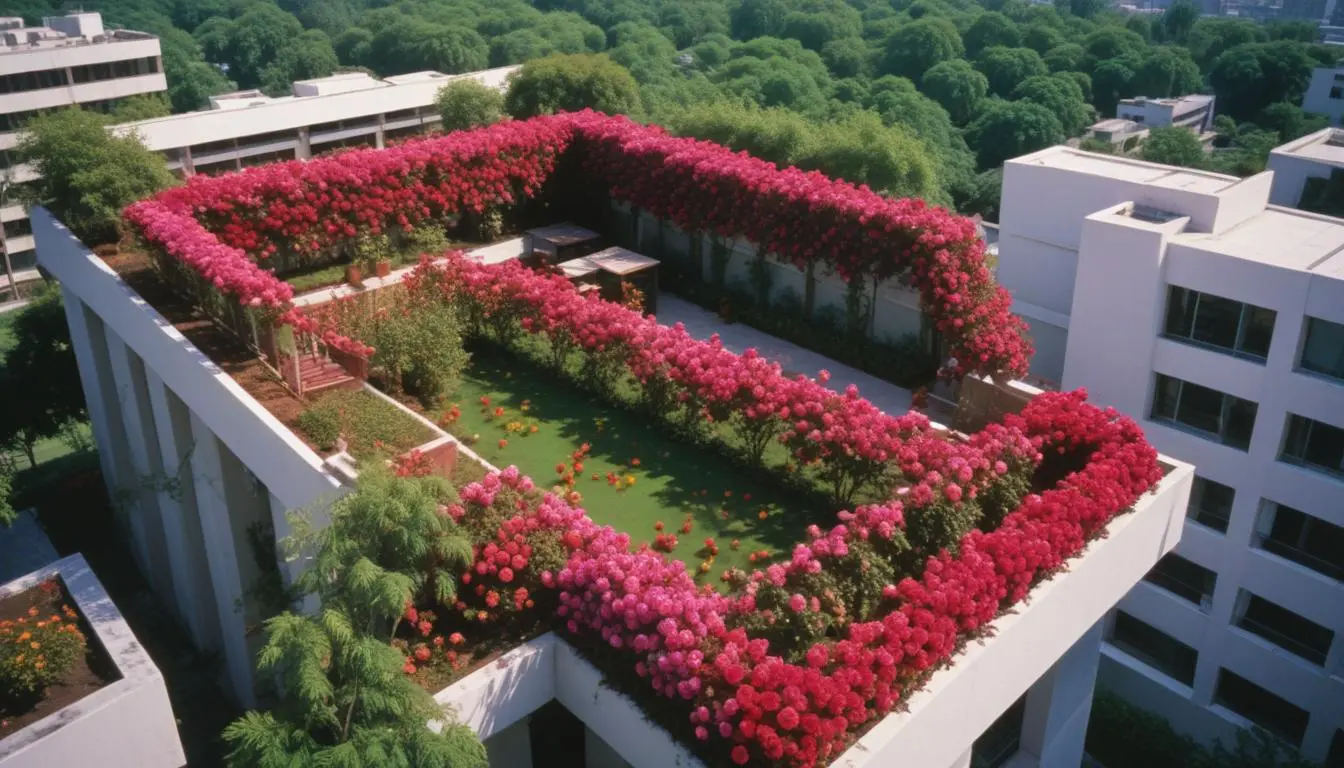
Pune weather offers opportunities as well as challenges for rooftop gardens. With sun-baked heat in summer, careful landscape planning becomes important for making the outdoor space livable. This is how strategic positioning of plants and choosing the right ones can minimize heat and accentuate floral glory:
- Floral trees that provide shade and a pop of colour such as Cassia bahawa, Tabebuia, or Plumeria could be strategically positioned in independent planters. These not only lower ambient temperatures but also bring stunning colour during flowering seasons.
- Pergolas draped with flowering climbers like Bougainvillea, Rangoon Creeper, or Trumpet Vine produce shaded pathways with added vertical visual appeal. The climbers need very little soil depth, making them perfect for rooftop weight restrictions while offering spectacular aromatic experiences when they are in bloom.
- Dead walls converted to a backdrop for a living perennial flowering plants such as Lantana, Hibiscus, and Ixora not only enhance otherwise blank walls but also create positive microclimates. Adding vertical gardens at such locations could also help retain heat in winters, lower ambient temperatures in summer, and raise humidity levels in their direct surroundings.
The Rose Garden Effect: Blooms and Workplace Wellness
Integrating a rose garden into office rooftop areas provides deep psychological rewards to staff. Existing research continually demonstrates that exposure to flowering plants has a significant impact on mental health, decreasing stress, and increasing productivity. A well-planned rose garden provides:
- Visual stimulation from constantly changing seasonal blooms that shatter the tedium of office interiors
- Aromatherapy from pure fragrance available to alleviate anxiety and enhance mood
- Social areas that foster casual encounters and lateral thinking
- Times of awareness as workers note pollinators and season
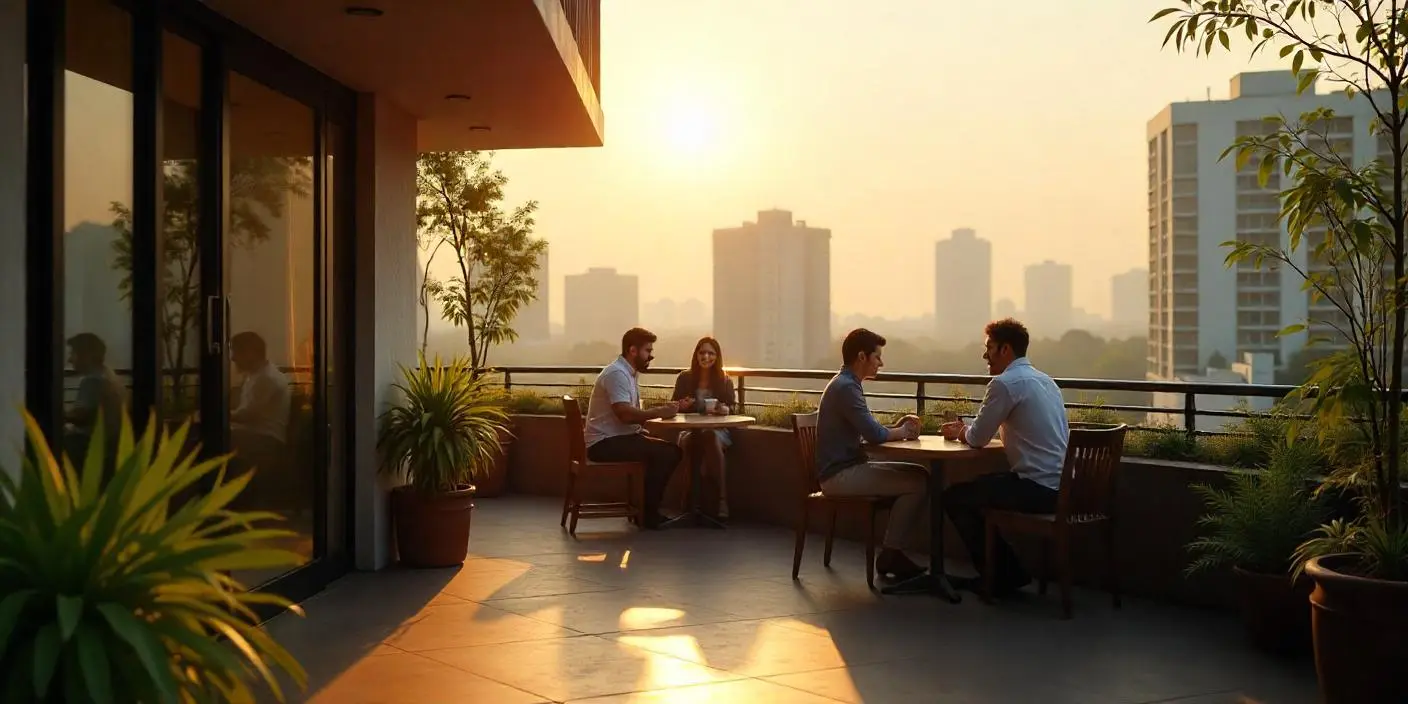
The Dynamic Canvas: Seasonal Color Shifts and Perennials
Perhaps the most enchanting quality of well-planned rooftop gardens is how they are constantly changing. Unlike stationary hardscapes, flowering landscapes change seasonally:
Perennials such as Penta, Allamanda, and Tecoma return with repeated flushes of flowering, providing changing color dynamics without necessitating replanting. These consistent players form the backbone of the garden while delighting onlookers with novel performances year after year.
We usually leave around 20% of planting space for seasonal annuals—marigolds, petunias, salvias—that add dramatic color splashes and can be rotated to keep the landscape visually interesting throughout the year. These intentional accents lead the eye to focal points while supporting the more permanent plantings.
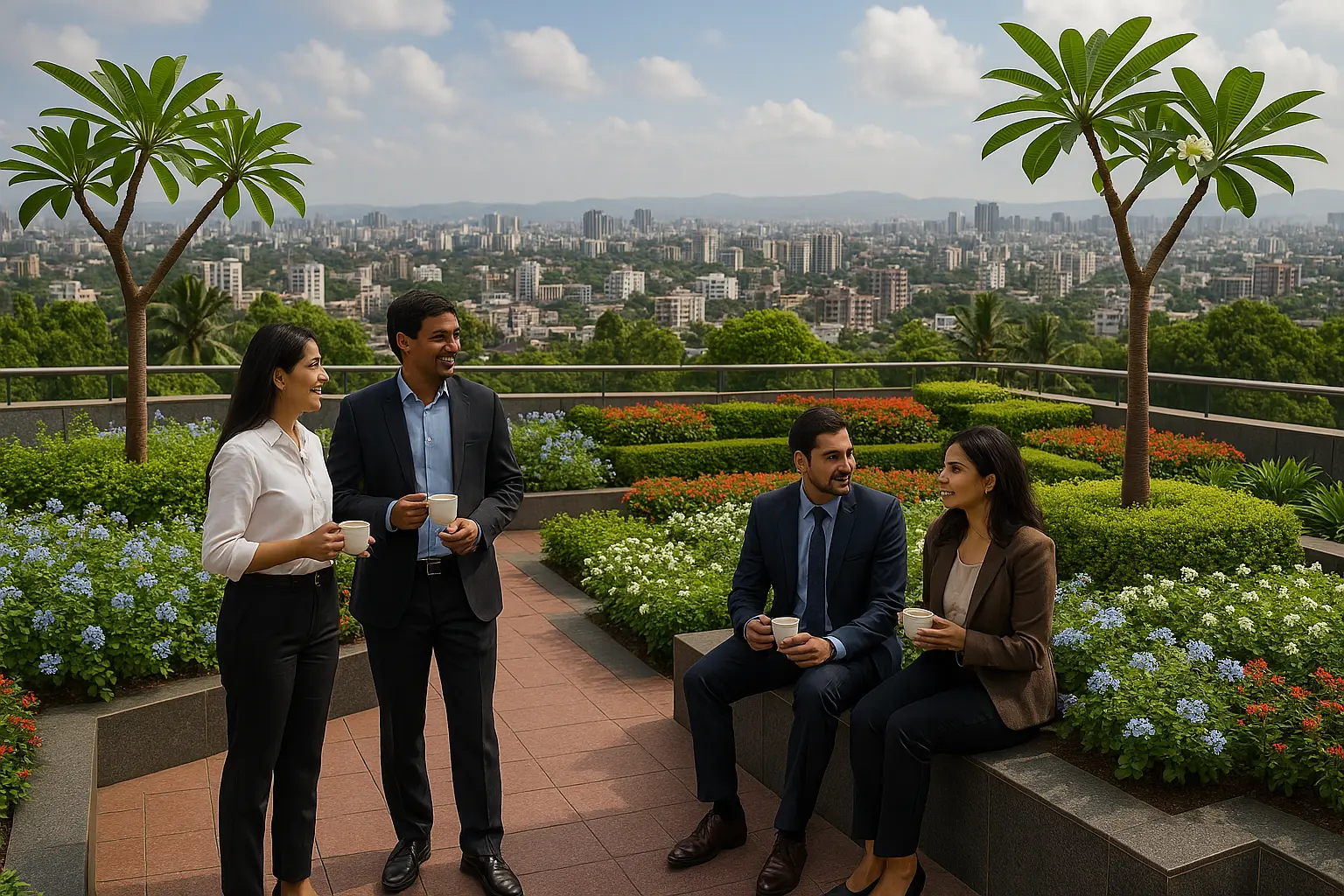
Technical Considerations for Successful Rooftop Gardens
Developing successful rooftop flowering landscapes involves technical skills beyond plant knowledge:
- Weight distribution should be mapped out over the structural slab very carefully, with the heavier components located over columns or load-bearing walls. Engineered lightweight soils lower overall weight without sacrificing optimal growing conditions.
- Irrigation should be water-efficient, especially during Pune's dry months. Drip irrigation, moisture sensors, and smart controls give the plants exactly what they require without loss.
- Wind protection by means of strategic hardscaping supports sensitive flowering species to flourish in exposed rooftop environments while establishing comfortable human spaces.
Conclusion: Elevating Urban Life Through Rooftop Blooms
Rooftop flower gardens are among the most effective means to take back the city spaces into nature and people's use. When properly planted and cared for, these works of living art turn under-used spaces into multiple-sensory experiences that change with the seasons. From providing mental wellness to office employees, to providing urban heat island relief, flowering roofscapes address several issues present in our cities today.
By partnering with landscape professionals who understand both the artistic and technical aspects of these spaces, property owners can create stunning rooftop sanctuaries that flourish despite challenging conditions. The result is not just a garden, but an elevated experience that connects people with nature's rhythms and beauty, even in the heart of the city.
